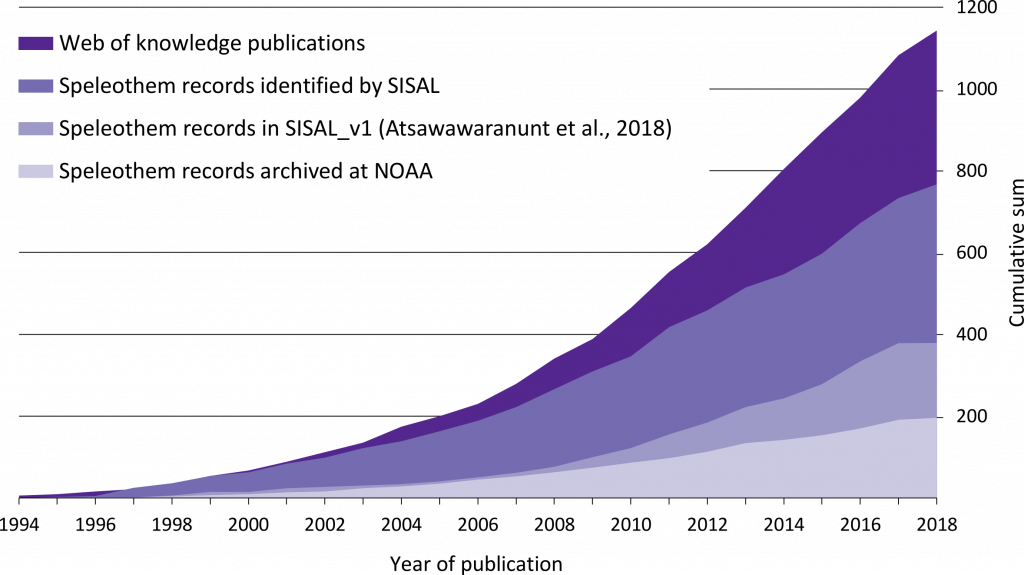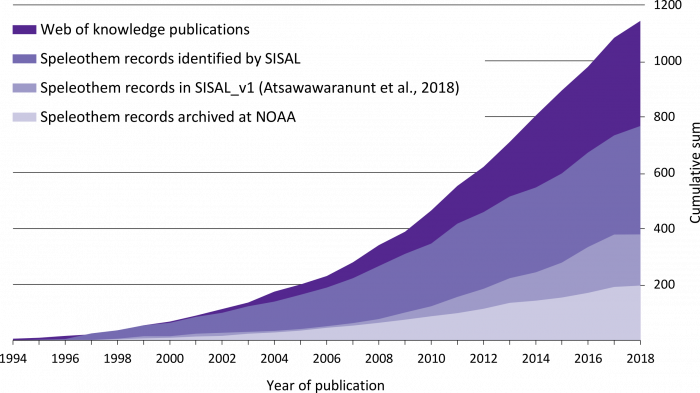The introductory paper of the SISAL’s Special Issue in the open-access journal “Quaternary”, edited by Sandy Harrison and myself, is now published: https://www.mdpi.com/2571-550X/2/1/7.
In this editorial paper, we discuss some of the important issues underpinning the use of speleothems to reconstruct past climates and how the existence of the SISAL database can assist palaeoclimate research in many new ways. For example, having speleothem data documented in a standardised way with adequate metadata facilitates reconstructions of large-scale changes in atmospheric circulation that are not possible with individual records.
We also discuss the main challenges that have arisen in the construction of such database and outline potential ways forward. The fact that current practices of data reporting vary extensively among publications and that many of the pioneers in speleothem research are now retiring present an important “data rescue” challenge. In some cases these difficulties resulted in published speleothem records not being included in the SISAL database. However, we hope that the regional papers showcased in this Special Issue will motivate the speleothem community to embrace the new possibilities that having such a speleothem database offers. This resource opens up opportunities for future research, as well as supports open science in line with the FAIR (Findable, Accessible, Interoperable, Reusable) principles for scientific management and stewardship[1].
Examples on how speleothem records can be used to investigate past climate changes on a regional basis are being published by SISAL members in this Special Issue and can be found here: https://www.mdpi.com/journal/quaternary/special_issues/speleothem_records_climate

J.-W.; da Silva Santos, L.B.; Bourne, P.E.; et al. The FAIR Guiding Principles for scientific data management
and stewardship. Sci. Data 2016, 3, 160018, doi:10.1038/sdata.2016.18
[2] Atsawawaranunt, K.; Comas-Bru, L.; Amirnezhad Mozhdehi, S.; Deininger, M.; Harrison, S.P.; Baker, A.;
Boyd, M.; Kaushal, N.; Ahmad, S.M.; Ait Brahim, Y.; et al. The SISAL database: A global resource to document
oxygen and carbon isotope records from speleothems. Earth Syst. Sci. Data 2018, 10, 1687–1713,
doi:10.5194/essd-10-1687-2018.
[3] Atsawawaranunt, K.; Harrison, S.; Comas-Bru, L. SISAL (Speleothem Isotopes Synthesis and AnaLysis
Working Group) database Version 1.0. University of Reading. Dataset 2018, doi:10.17864/1947.147

